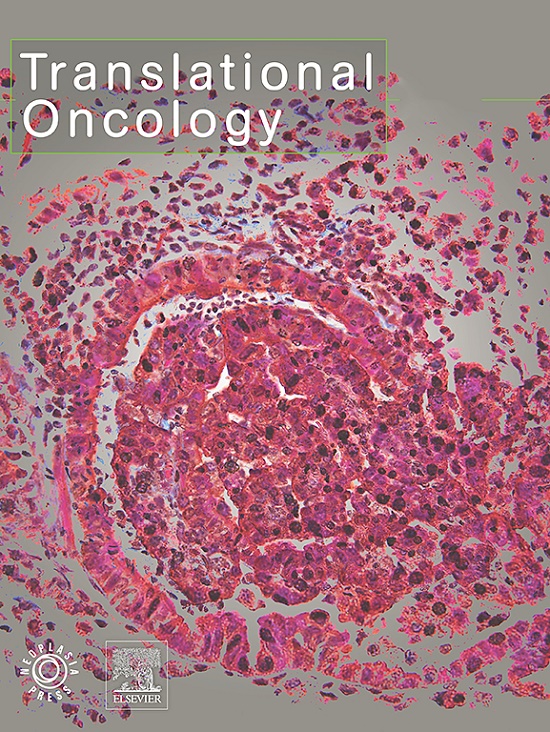Carfilzomib promotes Iodine-125 seed radiation-induced apoptosis, paraptosis, and ferroptosis in esophageal squamous cell carcinoma by aggravating endoplasmic reticulum stress
IF 5
2区 医学
Q2 Medicine
引用次数: 0
Abstract
Iodine-125 (125I) seed brachytherapy has been applied to treat various malignant tumors such as esophageal cancer, however, radioresistance can reduce its efficacy. Endoplasmic reticulum stress (ERS) and subsequent unfolded protein response (UPR) is one of the core mechanisms of 125I seed radiation-induced cell death, thus aggravating ERS has been considered a promising sensitization strategy. Herein, we show that combination therapy of an irreversible proteasome inhibitor carfilzomib (CFZ) and 125I seed radiation displayed strong anti-tumor effect on esophageal squamous cell carcinoma (ESCC). Mechanistically, ERS and UPR regulated multiple cell death modalities induced by the combination therapy, including apoptosis, paraptosis, and ferroptosis. 125I seed radiation induced reactive oxygen species (ROS) production, DNA damage, p53 activation, and apoptosis. CFZ promoted ROS production, and augmented 125I seed radiation-induced apoptosis via the mitochondrial pathway, which was mediated by the UPR-C/EBP homologous protein (CHOP) pathway and was independent of the p53 pathway. CFZ enhanced 125I seed radiation-induced intracellular Ca2+ overload, protein ubiquitination, ERS, and UPR, consequently promoting paraptosis. 125I seed radiation induced accumulation of intracellular Fe2+ and lipid peroxides but upregulated the expression of ferroptosis inhibitors, SLC7A11 and glutathione peroxidase 4 (GPX4). The combination therapy promoted ferroptosis by enhancing the accumulation of intracellular Fe2+ and downregulating GPX4 expression. The mouse experiment demonstrated that CFZ can promote the efficacy of 125I seed radiation with good tolerance. Our findings suggest that combination therapy of 125I seed radiation and CFZ is associated with multiple cell death modalities and may serve as a promising therapeutic strategy for ESCC.
卡非佐米通过加重内质网应激促进碘-125种子辐射诱导的食管鳞状细胞癌细胞凋亡、旁凋亡和铁下垂
碘-125 (125I)粒子近距离放射治疗已被应用于食管癌等多种恶性肿瘤的治疗,但放射耐药会降低其疗效。内质网应激(ERS)和随后的未折叠蛋白反应(UPR)是125I种子辐射诱导细胞死亡的核心机制之一,因此加重内质网应激被认为是一种很有前途的致敏策略。本研究表明,不可逆蛋白酶体抑制剂卡非佐米(carfilzomib, CFZ)与125I粒子辐射联合治疗对食管鳞状细胞癌(ESCC)具有较强的抗肿瘤作用。在机制上,ERS和UPR调节联合治疗诱导的多种细胞死亡方式,包括凋亡、细胞凋亡和铁下垂。125I种子辐射诱导活性氧(ROS)的产生、DNA损伤、p53激活和细胞凋亡。CFZ通过线粒体途径促进ROS的产生,增强125I种子辐射诱导的细胞凋亡,该途径由ubr - c /EBP同源蛋白(CHOP)途径介导,不依赖于p53途径。CFZ增强125I种子辐射诱导的细胞内Ca2+超载、蛋白泛素化、ERS和UPR,从而促进细胞凋亡。125I种子辐射诱导细胞内Fe2+和脂质过氧化物的积累,但上调铁凋亡抑制剂SLC7A11和谷胱甘肽过氧化物酶4 (GPX4)的表达。联合治疗通过增强细胞内Fe2+的积累和下调GPX4的表达来促进铁下垂。小鼠实验表明,CFZ对125I种子辐射有促进作用,且耐受性好。我们的研究结果表明,125I粒子辐射和CFZ联合治疗与多种细胞死亡模式相关,可能是一种有希望的ESCC治疗策略。
本文章由计算机程序翻译,如有差异,请以英文原文为准。
求助全文
约1分钟内获得全文
求助全文
来源期刊

Translational Oncology
ONCOLOGY-
CiteScore
8.40
自引率
2.00%
发文量
314
审稿时长
54 days
期刊介绍:
Translational Oncology publishes the results of novel research investigations which bridge the laboratory and clinical settings including risk assessment, cellular and molecular characterization, prevention, detection, diagnosis and treatment of human cancers with the overall goal of improving the clinical care of oncology patients. Translational Oncology will publish laboratory studies of novel therapeutic interventions as well as clinical trials which evaluate new treatment paradigms for cancer. Peer reviewed manuscript types include Original Reports, Reviews and Editorials.
 求助内容:
求助内容: 应助结果提醒方式:
应助结果提醒方式:


